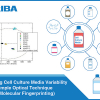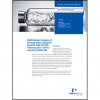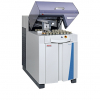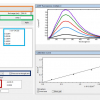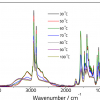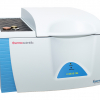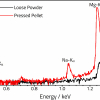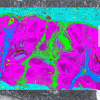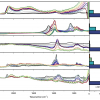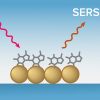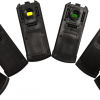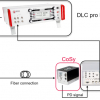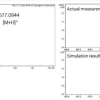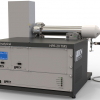Spectroscopy Applications
A-TEEM fluorescence spectroscopy is used to characterise cell media and the effect that storage conditions have on their compositions.
The analysis of elemental content is critical to ensuring the quality and safety of drinking water. Regulations such as Directive (EU) 2020/2184 and ISO 17294 provides guidelines for using ICP-MS for water analysis, aiming to protect human health from the adverse effects of its contamination.
This Application Note demonstrates the analysis of chlorine (Cl) in oil according to ASTM D4929 except that a rhodium anode tube has been used.
This note presents a reinvestigation and revaluation of the quantum yield of 2AMP in 1 M H2SO4 using quinine bisulphate in 1 M H2SO4 as the reference standard with a modern spectrofluorometer.
Detailed analysis of the temperature-induced changes in the spectra can be used to obtain insights into the phase behaviour of mixtures such as the soaps described in this application.
This note looks at design options to optimise sensitivity, size and wavelength and how they can stretch the limits of applied Raman spectroscopy.
XRF spectrometry determines chemical composition in materials with high accuracy and minimum sample preparation, and is a preferred technique in process and quality control.
Pelletised samples exhibited stronger signal intensities for the lightest elements compared to loose powders.
This application note demonstrates the use of IR laser imaging for tissue analysis and the tremendous speed advantages associated with it.
Time-resolved emission spectroscopy is used to identify the emission pathways in the 0D metal halide hybrid, Tris SbMnCl.
Operando infrared spectroscopy was used to unravel CO2 activation of supported Ni catalysts in Specac’s HTHP cell.
The Quest ATR with heated puck is used for the analysis of butter and its transition from solid to liquid phase.
Hybrid Raman spectroscopy and SERS to detect analytes with low concentrations.
ATR-FTIR spectroscopy is very useful to characterise the chemistry of dental bonding systems.
This note demonstrates the use of the Arrow silicon ATR system for batch, long-duration experiments on paint samples following the principles of ASTM STP1119.
This application note provides an introduction to the principles of laser locking in general and to the more practical aspects of phase and frequency locking of diode lasers.
This note discusses the benefits of the various standard and patented grating design technologies, and the general grating parameters that can be controlled.
BioChromato show how their ionRocket sample preparation device, used in combination with DART®-MS, enables routine analysis of low solubility, high molecular weight compounds.
For rapid qualitative analysis of liquid samples, a liquid film can be formed by simply squeezing the sample between two windows without the need for a spacer.
This application describes breath by breath analysis of expired isoprene during exercise.

